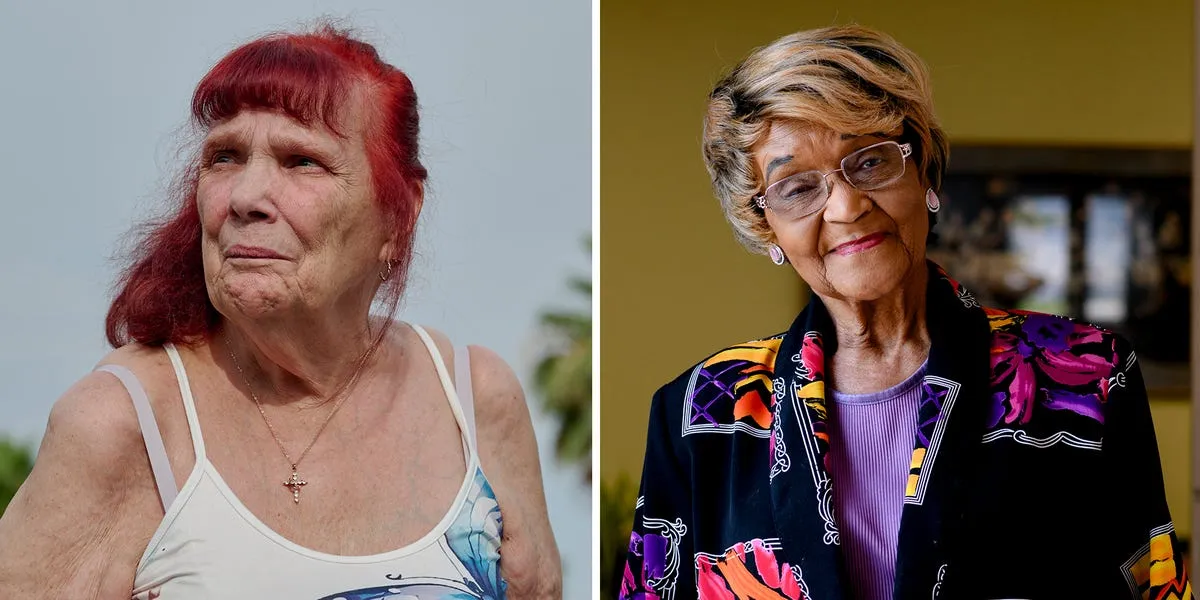
After a demanding week spent poring over spreadsheets, Sandy McConnell, 80, makes her way to a restaurant in Nevada for her monthly lunch with former colleagues. This tradition began years ago when McConnell texted her group chat, stating, "Life is too freaking short," and proposed the idea of coming together to discuss life, family, and current events over a meal. Upon returning home, she checks her bank account, which reads just $37, and realizes she won't dine out again until next month's meet-up. McConnell works full-time as a remote accounts receivable specialist, earning around $50,000 annually to supplement her monthly Social Security income of $1,784. With monthly expenses exceeding $3,000 due to debt, mortgage, and car insurance, she finds herself $70,000 in debt—not including her home. Much of this debt was incurred while helping her oldest son recover from a stroke in 2023, making retirement seem increasingly unattainable.
Throughout her life, McConnell, a mother of five, has faced financial instability. After enduring multiple divorces, she was often left in dire straits. Her diverse job history includes stints as a grocery cashier, nurse's aide, and credit and collections manager. At one point in the early 2000s, she even housed 13 family members under her roof, leading her to file for bankruptcy due to the financial strain. After years of hard work, McConnell became a homeowner a decade ago, with her house now estimated to be worth about $400,000. "I find myself at 80 still needing to work," she reflects. "Part of that is financial, and part of it is because I would be bored. If you don't have any money to do anything, what are you going to do?"
McConnell is not alone; nearly 550,000 Americans over the age of 80 are still working, particularly in fields like education, construction, and religious services, according to a recent Business Insider analysis of Census Bureau data. This demographic is among the fastest-growing segments of the workforce, with the trend expected to continue over the next decade. Many older workers have shared their stories with Business Insider, revealing that unforeseen medical or financial crises derailed their retirement plans, while others simply did not save enough during their working years.
Older workers with limited savings often employ various budgeting strategies to manage their daily expenses. Some have even considered selling their homes, but many view their home equity as a last resort. According to data from Fannie Mae, only 15% of older homeowners would consider using their home equity to fund retirement. For example, Connie Martin, 81, owns her home with about $60,000 in equity and maintains a strict budget to keep her discretionary spending low. Despite facing sporadic income throughout her life, including periods of living paycheck to paycheck as a single mother, Martin has developed resilience and financial acumen. "I've been on my own since I was 15, so I've learned how to survive," she states.
The financial landscape for Americans aged 75 and older paints a concerning picture. In 2022, the median income for this group was approximately $49,100, down 2% from 2019. Furthermore, the median net worth among those 75 and older stood at $335,600. Alarmingly, an AARP survey found that one in five Americans aged 50 and above have no retirement savings. While some older workers claim financial stability and only work part-time for supplemental income or a sense of purpose, many struggle to find higher-paying jobs, often relegated to lower-wage retail or nonprofit roles.
Tracey Gendron, chair of the Virginia Commonwealth University Department of Gerontology, explains that economic changes over the past few decades have diminished the purchasing power of savings. "The idea of turning 65 and no longer working is somewhat outdated," Gendron notes. "People reach 65 and realize they want to continue working, but many lack the savings to support themselves for another 30 years."
Many older workers are turning to self-employment out of necessity. An analysis indicates that 27% of workers aged 80 and older are self-employed, with Americans aged 65 and older making up about 10.6% of all self-employed workers. Gendron emphasizes that many older individuals engage in work not only for financial reasons but also for the sense of purpose it provides. However, some have felt compelled to start businesses due to the lack of well-paying job opportunities that accommodate their health needs. For instance, Bruce Rubin, 81, attempted to launch a company to sell solar-powered refrigeration units but faces challenges in securing funding.
For some older workers, family support plays a crucial role in alleviating financial stress. Many older Americans in challenging financial situations report receiving help from their children, whether through caregiving or financial contributions. June Boyd, 90, relies on her biweekly paycheck to cover her expenses, earning approximately $1,100 monthly from Social Security and a part-time job. Despite her extensive work history, Boyd has never considered retirement an option. "When we get the utility bills and auto insurance, you don’t get a discount for being a senior," she explains.
Despite their financial challenges, many older workers find joy and purpose in their jobs. Karl Andrew Pillemer, a professor of gerontology at Weill Cornell Medicine, notes that older Americans are increasingly drawn to meaningful social engagement, even in roles that may seem mundane. Some have found driving for Uber to be a perfect fit, as it allows flexibility and social interaction. Sally Ann McCarter, 85, returned to work after her husband passed away, realizing that she couldn’t live comfortably without a steady income. She now works at a fulfillment company, where her earnings contribute significantly to her quality of life.
As McCarter reflects, "I don’t look too far into the future because you never know. That’s just life." The stories of Sandy McConnell, Connie Martin, Bruce Rubin, June Boyd, and Sally Ann McCarter illustrate the complex realities of working seniors in America today. Many are navigating financial challenges while seeking purpose and connection in their later years.